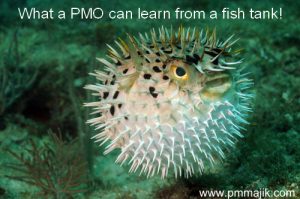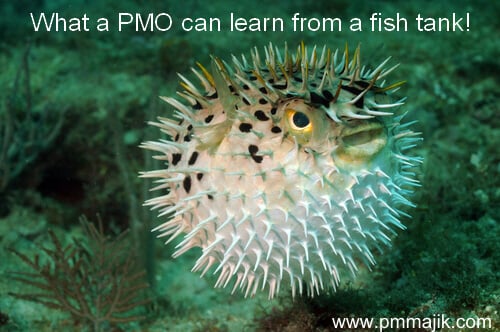 I would like to start by sharing a story about one of my hobbies, keeping marine tropical fish.
I would like to start by sharing a story about one of my hobbies, keeping marine tropical fish.
My wife and I had gone into a local pet store to collect some pet food. Like so many times before we had a look round the store, which included the fish section. The store had both fresh water and marine tropical fish.
On this particular day, in one of the tanks was a weird shaped fish which was almost human in the way it acted. It was at the front of the tank and looked like it was watching everyone as they gazed in. The fish was a puffer fish.
I had always wanted to have a marine fish tank and my wife convinced me we should have a tank so we could have this puffer fish.
After spending about half an hour discussing what was needed with the knowledgeable staff member, I had purchased the required tank, filters, chemical salt, coral, etc. – everything needed to set up and seed the tank so the puffer could be added 7 days.
I executed the plan to perfection and 7 days later the puffer was part of the family. One of the most fascinating attributes of a puffer is that approx. once a day, they puff up like a large ball. Truly awe inspiring to watch.
Over the next year I added more fish, kept the levels just right and all was good. However, I decided that it would be great to have more fish. To do this I needed more water volume as you have to allow so much water for each fish. So I added an additional tank in the cabinet. All hidden with water being pumped between the two tanks. This doubled the volume of water so doubled the fish I could have in the top (on display tank).
To support this I added extra filters, power heads, protein skimmers, trickle filters and more. All was well to start with. However, it became hard to maintain the levels, fish started dying and then one fatal day, the puffer fish, the whole reason for the project, died. It was not a good day.
You may be wondering why start a post with this story? The reason is that there is a lot that can be learnt by the PMO from one of the key principles to setting up a tank and keeping fish, the acronym K.I.S.S.
What is K.I.S.S.?
The acronym K.I.S.S. stands for Keep It Simple Stupid. As you will probably agree practical and straight to the point. If I had kept to that with my tank, the puffer would have been with our family many happy years.
K.I.S.S. and the PMO
Hopefully you have realised there is a lot to be learnt and benefit by adopting this method when setting up and running a PMO. If a process or template is hard to understand and / or difficult to complete, people will not complete the process. It is also probably a sign that the process has been over engineered.
Take a moment to think about the processes in your PMO. How to they stand up if you apply the K.I.S.S. measure? If some fail. Take action and think how they can be changed to meet the objective as simply as possible.
When I reflect on the PMO’s I have designed, I realise that I have been applying this approach. However, instead of calling it K.I.S.S. I have used words like pragmatic, practical, fit for purpose, etc.
K.I.S.S. = Agile
One of the cornerstones of Agile when it comes to documentation and reporting is the term “barely sufficient”. The concept being that the team only produces what is absolutely required in order to complete the task. The reason being that producing anything more than what is required in respect of documentation is a waste of time that could be better used completing tasks.
So there is a clear parallel between producing document that is “barely sufficient” and keeping your documentation simple.
Call to Action
OK, I hope that my fishy tale (sorry could not resist the joke) has provoked your thoughts on what changes you can make with your current tools and processes. Embracing the pragmatic, K.I.S.S, Agile, etc. approach will make a difference and you will not end up with a regrettable outcome like the loss of your cherished puffer fish.
